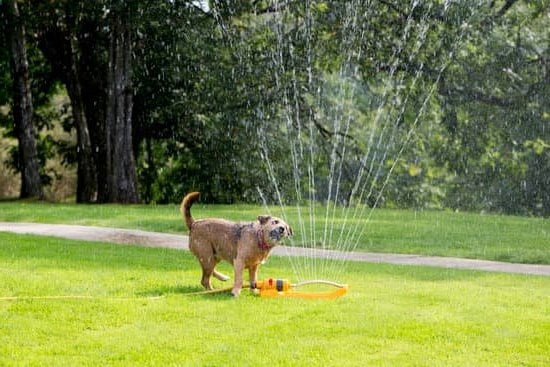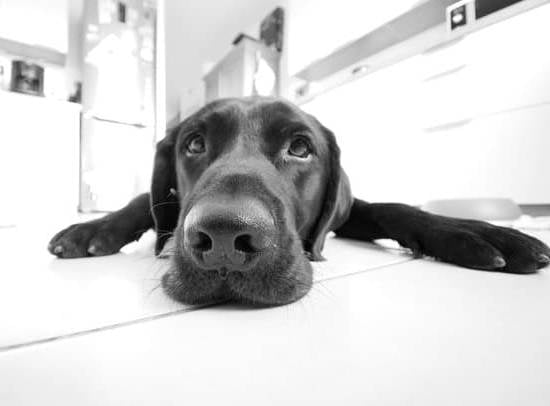Potty training is a crucial aspect of owning a dog, ensuring their well-being and maintaining a clean living environment. One effective method to achieve success in this area is teaching your furry friend to signal when they need to go outside. By learning how to train your dog to signal to go outside, you can establish a routine that benefits both you and your pet.
Properly potty training your dog not only prevents accidents indoors but also strengthens the bond between you and your canine companion. Understanding the significance of this training process sets the foundation for successful communication and cooperation with your pet. By incorporating signals into your training routine, you can effectively convey messages between you and your dog regarding outdoor elimination needs.
In this article, we will explore the various aspects of training your dog to signal when they need to go outside. From the supplies needed to choosing the right method and addressing challenges along the way, we will provide a comprehensive guide on establishing a successful potty training routine for your beloved pet. Stay tuned for valuable insights and step-by-step guidelines on how to teach your dog this essential skill.
Getting Started
When embarking on the journey of training your dog to signal to go outside, it is essential to gather the necessary supplies to set you and your furry friend up for success. Having the right tools can make the training process smoother and more effective. Here are some supplies that you will need:
- Training treats: High-value treats that your dog loves will be crucial in reinforcing positive behavior. Make sure to have plenty on hand during each training session.
- Clicker: Using a clicker can help mark desired behaviors and communicate with your dog more effectively. It serves as a clear signal that they have done something right.
- Leash and harness: Especially if you plan to use a specific signal like pawing at the door or ringing a bell, having a leash and harness ready can assist in guiding your dog to the designated outdoor area.
- Bell or communication device: Depending on the method you choose for signaling, having a bell or another form of communication device near the door will be essential for teaching your dog how to alert you when they need to go outside.
With these supplies in hand, you can now proceed with confidence as you begin the process of teaching your dog how to signal their needs effectively. Remember to be patient and consistent in your approach, as training takes time and dedication from both you and your pet.
Choosing the Right Method
When it comes to training your dog to signal to go outside, there are various approaches you can take. The key is to find a method that works best for both you and your furry companion. Here are some different techniques you can consider:
- Bell Training: One popular method is bell training, where you hang a string of bells on the door that leads outside. Teach your dog to ring the bells by gently nudging them with their nose or paw every time before going out.
- Scratching or Whining: Some dogs naturally scratch at the door or whine when they need to go outside. You can reinforce this behavior by immediately letting them out whenever they exhibit these signals.
- Pawing at the Door: Another option is teaching your dog to paw at the door to indicate they need to go outside. You can train them by praising and rewarding them every time they use their paw to communicate their needs.
It’s essential to observe your dog’s natural behavior and tendencies to determine which method might be most effective for them. Keep in mind that each dog is unique, so what works for one may not work for another. Patience and consistency are key when choosing a training approach.
Here Are a Few More Methods
- Verbal Cue: You can also teach your dog a specific verbal cue, such as “outside” or “potty,” that they learn to associate with going outdoors.
- Visual Signal: Some pet owners have success using visual cues like placing a specific mat near the door that their dog learns to stand on when they need to go outside.
- Combination Approach: In some cases, combining multiple methods – such as bell training along with a verbal cue – can be the most effective way to train your dog to signal their need to go outside.
By exploring different options and staying attuned to your dog’s behavior, you can find the right method that will help teach your furry friend how to effectively communicate when they need to go potty outside.
Step-by-Step Training Process
When it comes to training your dog to signal to go outside, consistency is crucial. The first step in this process is to establish a routine that works for both you and your furry friend.
Determine specific times during the day when your dog typically needs to go out and use those as opportunities for training. Additionally, create a designated signal that your dog will use to indicate their need to go outside, whether it’s ringing a bell, pawing at the door, or another distinct action.
To begin the training process, start by taking your dog outside at regular intervals, such as after meals, playtime, and waking up in the morning. When your dog shows signs of needing to go out or uses the signal you’ve established, immediately praise them and take them outside.
Consistency in responding to their signals will help reinforce the behavior you want to encourage. Use verbal cues like “outside” or “potty” while they’re going potty outside so they begin associating those words with the action.
In addition to establishing a routine and using consistent cues, it’s essential to be patient throughout the training process. Each dog learns at their own pace, so it’s important not to rush or become frustrated if there are setbacks along the way. Celebrate even small successes with verbal praise, treats, or affection to reinforce positive behavior. Remember that every interaction with your dog is an opportunity for training reinforcement and positive reinforcement will help create lasting habits.
| Training Tip | Details |
|---|---|
| Routine Establishment | Set specific times for potty breaks based on your dog’s schedule |
| Consistent Cues | Use verbal cues while outdoors like “potty” or “outside” |
| Patience & Positive Reinforcement | Celebrate small wins and be patient through setbacks during training |
Teaching Your Dog the Signal
Teaching your dog to signal to go outside is an essential part of potty training, as it helps establish communication between you and your furry friend. One effective method to teach this signal is by using commands and positive reinforcement. Dogs are highly trainable animals and respond well to consistent training techniques that focus on rewarding good behavior.
To start teaching your dog the signal to go outside, choose a specific command that will indicate when they need to relieve themselves. This could be a simple word like “outside” or even a bell by the door that they can ring. Begin by associating this command with the act of going outside for potty breaks. Every time you take your dog out, use the command consistently.
Positive reinforcement is key in this training process. When your dog successfully signals that they need to go outside, praise them enthusiastically and give them a treat as a reward. Dogs thrive on positivity and will be more likely to repeat the desired behavior when they know it leads to a positive outcome. Consistency in using the same command and providing rewards will help solidify the connection in your dog’s mind.
Remember that training takes time and patience, so be prepared for setbacks along the way. If your dog has accidents indoors or struggles to grasp the concept initially, stay calm and continue reinforcing the desired behavior with positive reinforcement. With dedication and a consistent approach, your dog will eventually learn how to signal to go outside effectively, leading to a successful potty training experience for both you and your furry companion.
| Training Tip | Recommendation |
|---|---|
| Use consistent commands | Important for reinforcing the desired behavior |
| Provide rewards promptly | Helps your dog make positive associations with signaling |
| Stay patient and persistent | Training takes time; consistency is key |
Problem-Solving
While training your dog to signal to go outside can be a rewarding experience, it is important to acknowledge that challenges and setbacks may arise during the process. One common issue that pet owners face is inconsistency in their dog’s signaling behavior. This can occur when the dog fails to consistently use the signal or forgets to do so altogether. In such cases, it is crucial to remain patient and persistent in reinforcing the training techniques.
To address this challenge, consider revisiting the basics of the training process. Make sure that you are consistently taking your dog outside at regular intervals, especially after meals, playtime, and naps. By establishing a routine for bathroom breaks, you can help reinforce the desired signaling behavior in your furry friend. Additionally, closely monitor your dog’s behavior for any signs of needing to go outside, such as pacing or sniffing around.
Another common setback in training your dog to signal to go outside is accidents occurring inside the house. Accidents can happen due to various reasons, including incomplete house training or medical issues. If your dog continues to have accidents indoors despite consistent training efforts, consult with a veterinarian to rule out any underlying health concerns. Additionally, reinforce good behavior by praising and rewarding your dog each time they successfully signal their need to go outside.
Consistency Is Key
Consistency in training is crucial when teaching your dog how to signal to go outside. By maintaining a successful training schedule, you can help reinforce the desired behavior and ensure that your furry friend understands when and how to communicate their need to go potty. Consistency not only helps your dog learn faster but also establishes a routine that creates a sense of security and predictability for them.
Establish a Regular Routine
One of the most important aspects of maintaining consistency in training is establishing a regular routine for your dog. This means feeding them at consistent times, taking them out for potty breaks at designated intervals, and incorporating training sessions into your daily schedule. Dogs thrive on routine and structure, so by providing them with a predictable daily routine, you can help reinforce the signaling behavior you are trying to teach them.
Be Patient and Persistent
Consistency requires patience and persistence on your part as a pet owner. Training takes time, and it’s important not to get frustrated if progress seems slow.
Remember that every dog learns at their own pace, so continue to practice the training exercises regularly and be patient with your furry companion. If setbacks occur, stay calm and refocus on the training process without losing sight of your ultimate goal: to have a well-trained dog who can signal when they need to go outside.
Stay Committed
To maintain a successful training schedule, it’s essential to stay committed to the process. Consistency is not just about following a routine; it also involves dedication and perseverance in helping your dog learn the signaling behavior effectively. Make sure that all members of the household are on board with the training plan and understand the importance of consistency in achieving success. With determination and commitment, you can successfully train your dog to signal when they need to go outside.
Celebrate Success
Choosing the Right Rewards
When it comes to rewarding your dog for signaling to go outside, it’s essential to choose the right incentives that will motivate and reinforce their good behavior. Consider what your dog finds most rewarding, whether it’s a favorite treat, verbal praise, or a special toy. By understanding what drives your dog, you can tailor their rewards to make the training process more effective and enjoyable for them.
Timing Is Key
One crucial aspect of rewarding your dog for signaling to go outside is the timing of the reward. It’s important to praise or give treats immediately after they successfully give the signal, as this helps them make the connection between their action and the reward. Delayed rewards may confuse your dog and make it harder for them to understand what behavior you’re trying to reinforce. Consistent and timely rewards will help solidify their understanding of the desired signal.
Gradually Fading Rewards
As your dog becomes more proficient at signaling to go outside, you can start gradually fading out the rewards. This means reducing the frequency of treats or praise while still reinforcing their behavior periodically.
By doing this, you are teaching your dog that they don’t need a reward every single time they perform the desired action but that there is still potential for reinforcement. Remember that even intermittent rewards can maintain motivation and compliance in your dog’s behavior training journey.
Conclusion
In conclusion, training your dog to signal when they need to go outside is a crucial component of successful potty training. By understanding the importance of this training and committing to a consistent routine, you can set your furry friend up for success and create a harmonious living environment for both of you.
Remember, getting started with the right supplies and choosing the appropriate method for your dog are essential first steps. Whether you opt for bell training or another signaling method, patience and positive reinforcement are key elements in teaching your dog this behavior. Establishing a routine and sticking to it will also play a significant role in the effectiveness of the training process.
As you encounter challenges or setbacks along the way, it’s important to address them promptly and with patience. Consistency in your training schedule will be essential for reinforcing the desired behavior. And don’t forget to celebrate every success – big or small – with rewards and praise for your dog. By following these steps and staying dedicated to the process, you’ll soon have a well-trained pup who can effectively communicate their need to go outside.
Frequently Asked Questions
How Do I Get My Dog to Tell Me He Has to Pee?
Training your dog to communicate when they need to pee can be done through consistent reinforcement and observation. Pay attention to their behaviors, such as circling or whining, and then associate a specific signal like ringing a bell with going outside.
How Do You Train Your Dog to Tell You They Need to Go Outside?
Teaching your dog to alert you when they need to go outside involves positive reinforcement and consistency. Encourage them to use a signal, such as sitting by the door or ringing a bell, every time they need to go out.
Why Won’t My Dog Tell Me He Has to Go Outside?
There could be various reasons why your dog is not telling you when they need to go outside. It could be due to inadequate training, medical issues like urinary tract infections, anxiety or fear-related behavior, or simply not associating the cue with going outside.
Observing their behavior and consulting with a veterinarian or professional trainer can help address this issue effectively.

Welcome to the blog! I am a professional dog trainer and have been working with dogs for many years. In this blog, I will be discussing various topics related to dog training, including tips, tricks, and advice. I hope you find this information helpful and informative. Thanks for reading!





